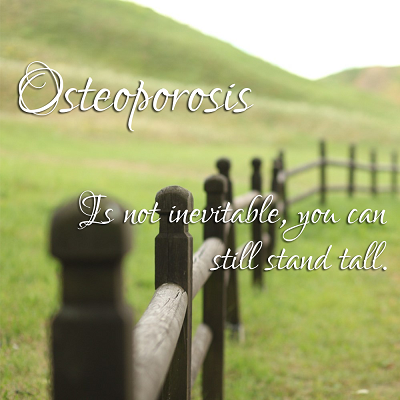 Hundreds of thousands of spontaneous fractures and crush fractures occur every year due to the “bone thinning” that results from the condition known as osteoporosis. Although the whole skeleton is affected, areas commonly affected by fractures are the hip, spine and wrist.
Hundreds of thousands of spontaneous fractures and crush fractures occur every year due to the “bone thinning” that results from the condition known as osteoporosis. Although the whole skeleton is affected, areas commonly affected by fractures are the hip, spine and wrist.
As a result of this condition, height loss and stooping can occur. This can subsequently lead to the vertebra in the spine collapsing.
Predisposing Factors Include:
- A deficiency in vitamins D and K2, very common in modern western society.
- Eating fat-free diets.
- Drinking 2 or more cups of coffee every day can greatly diminish bone mineral density in women.
- For men, alcohol is the major culprit.
Following are some health tips that can be undertaken by almost anyone to help maintain a healthy bone structure.
Natural Remedies
- Comfrey root is well known for promoting growth of bone cells.
- Calendula or Marigold encourages granulation.
- Calcium metabolism is assisted by Horsetail.
- Cayenne Pepper offers a positive effect on the circulation in order to transport nutrients throughout the body.
- Fenugreek tea is helpful.
- Bee propolis has a reputation for helping bone tissue regenerate.
Dietary Recommendations
- Eat plenty of green veggies and fresh fruit.
- Fish and fish oils included in the diet.
- Avoid excessive quantities of heavy meat meals as they interfere with calcium metabolism.
- Avoid excess salt as it can aggravate bone loss and causes phosphorus and calcium to be excreted through the kidneys.
- Slippery Elm and Irish Moss can be taken for their mineral content.
- Fresh, unadulterated water should be consumed regularly.
- Beneficial supplements include: Vitamin K2, Vitamin E, Magnesium, Vitamin B12, Zinc, Vitamin D and Vitamin C.
Herbal Teas
- Mix together equal parts of Nettles, Alfalfa and Comfrey leaves. Dose is 2 teaspoons to each cup of boiling water; allow to steep for 5 to 15 minutes and drink 1 cup, 3 times a day.
- Make a tea with 3 parts oats, 1 part Horsetail, 1 part Marigold petals and 2 parts Comfrey leaves to each cup of boiling water. Infuse for 5 to 15 minutes and drink one cup freely.
Mature Women Most at Risk
Osteoporosis is particularly prevalent after menopause. Women over 50 are the demographic which most suffer from measured bone loss. Reduced estrogen levels are believed to speed up the rate of reduction in bone mass.
Our bones act as a store of calcium. When calcium is need for critical body tasks not being supplied by dietary intake, the body will temporarily ‘rob’ some calcium from the bones. This will be replenished when conditions allow.
Pregnant and lactating women have a great requirement for calcium placed on their bodies to nourish their growing child, before and after the birth. As such, their bone density can be very compromised, especially if their diet is lacking in any of the nutrients necessary for bone growth.
It is very likely that some of the loss of bone density which becomes obvious after menopause is instigated due to the rigors of child-bearing and rearing.
Supportive Measures
Our skeletal system needs to be functioning in an optimal manner every day in order for us to perform at our healthy best. If our bones become brittle or weak due to a lack of mineral absorption from a poor diet, we will suffer the effects in many ways.
One of the best things you can do is exercise in the sun! Spending more time in the sun helps to obtain natural vitamin D absorption. If you are a smoker, STOP! As well as improving your overall health it will allow for optimum mineral absorption to rejuvenate your skeletal system.






